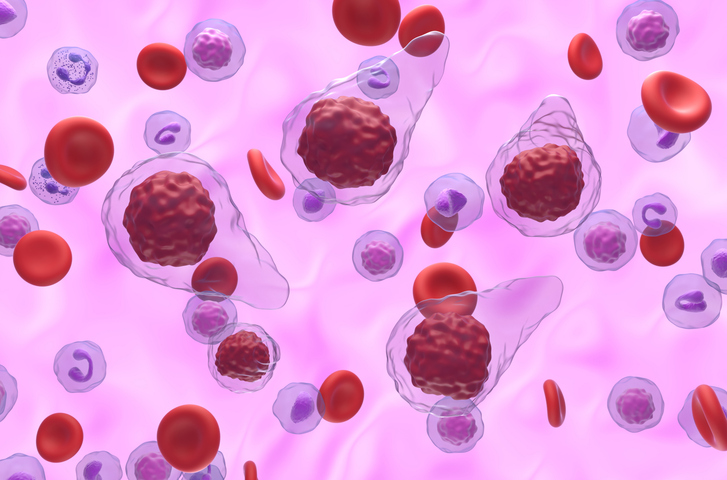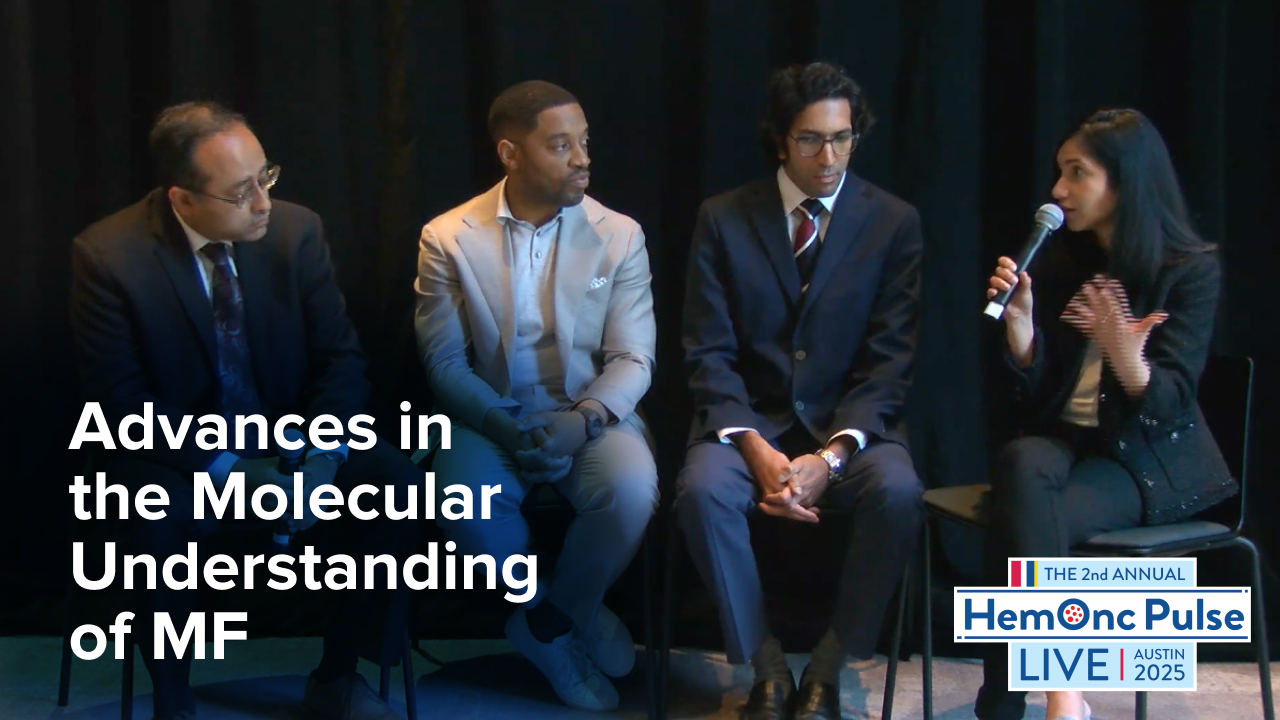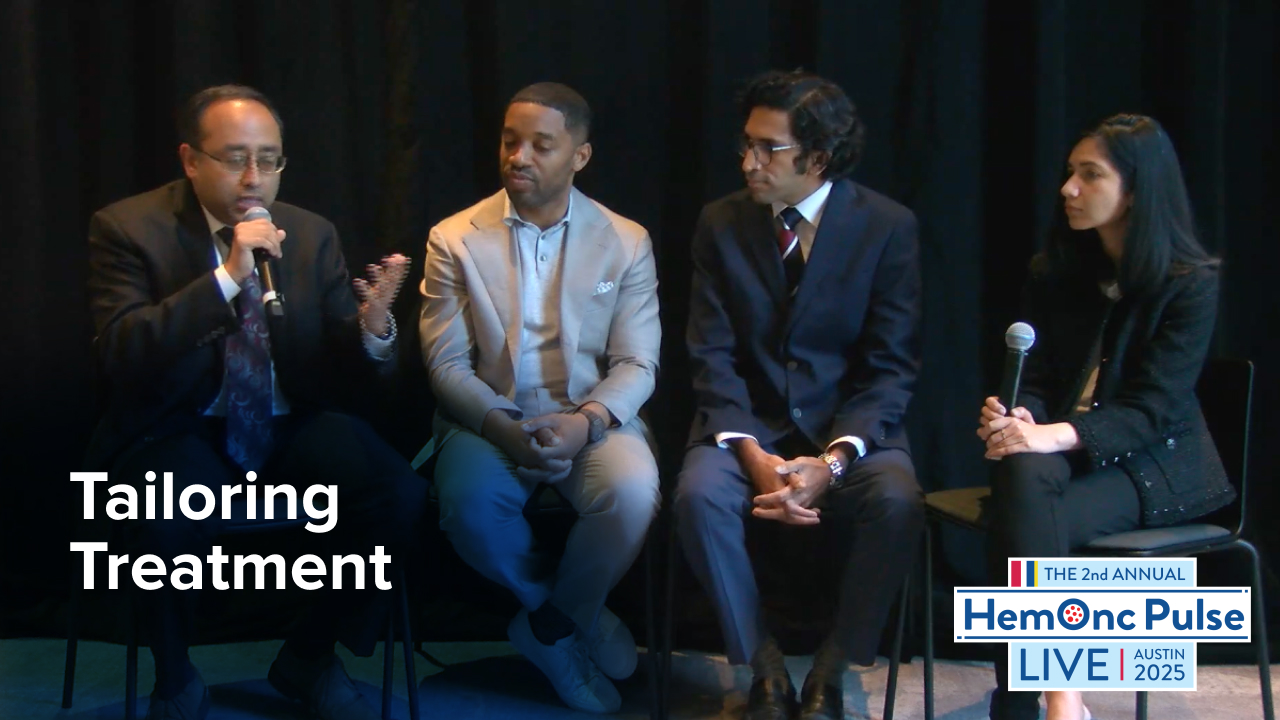
It is widely known that standard JAK inhibitor (JAKi) monotherapy offers limited depth of response and durability of response in patients with myelofibrosis. In a phase 3 MANIFEST trial, the combination of pelabresib and ruxolitinib surpassed the efficacy shown with the standard of care, showing substantial clinical benefit and treatment tolerability1.
“The study is very important in that it introduces the concept of JAK inhibitor-based combination therapy with a rationale agent that targets NFkB. The combination produces much deeper spleen responses, numerically better symptom benefit, and other markers of disease modification such as greater reduction in driver mutation level, inflammatory cytokines, bone marrow fibrosis, and megakaryocyte distancing,” John O. Mascarenhas, MD, professor of medicine and director of the center of excellence for blood cancer and myeloid disorders, Icahn School of Medicine at Mount told Blood Cancers Today.
The study reached its primary endpoint with a 30.4% improvement in splenomegaly with pelabresib plus ruxolitinib versus ruxolitinib alone. A spleen volume of greater than or equal to 35% from baseline at week 24 in 65.9% of the 214 patients in the pelabresib combination arm versus 35.3% of the 216 patients in the ruxolitinib monotherapy arm (95% CI, 21.6%-39.3%; P <0.0001).1
Results for the secondary endpoint in the phase 3 MANIFEST study also favored the pelabresib combination arm. The absolute change in total symptom score (TSS) from baseline to week 24 was -15.99 among patients treated with pelabresib and ruxolitinib versus -14.05 in the ruxolitinib monotherapy arm, showing a difference of -1.94 (95% CI, -3.92-0.04; P =0.0545). Another endpoint, greater than or equal to 50% reduction in TSS showed a rate of 52.3% in the pelabresib plus ruxolitinib arm versus 46.3% in the ruxolitinib-only arm.
The overall frequency of treatment-related adverse events in the study was lower with the pelabresib combination (49.1%) versus ruxolitinib monotherapy (57.0%).
According to Dr. Mascarenhas and colleagues, myelofibrosis has unique pathobiological characteristics. The exploratory analyses conducted in MANIFEST provided important context on how the addition of BET inhibitors to JAKi improves outcomes in this patient population. The research began nearly 10 years prior.
Early Promise of BET/JAKi Therapy
Preclinically, pelabresib demonstrated the ability to target several driver mechanisms in myelofibrosis. It also had synergy when combined with JAKi therapy. Once investigated in the clinical setting, pelabresib alone and in combination with JAKi induced favorable responses in terms of disease symptoms and spleen volume2.
“Myelofibrosis is a JAK-STAT driven disease but also has other inflammatory pathways that are active in the MPN stem and progenitor cell pool that prime the microenvironment to support malignant hematopoiesis and promote bone marrow fibrosis. NFkB has been shown to be actively expressed in these cells and contributes further to the inflammatory state through the expression of many key cytokines such as interleukin [IL]-8. IL-8 has been shown to have both adverse prognostic impact and therapeutic potential,” Dr. Mascarenhas t told Blood Cancers Today. “Targeting both NFkB through BET inhibition and down-regulating STAT activity through JAK1/2 inhibition has been shown in preclinical studies to have synergistic activity in murine modeling and serves as the basis of the combination of ruxolitinib and pelabresib in the phase 2 MaNIFEST trial and the recently published randomized phase 3 MANIFEST-2 comparing this combination to ruxolitinib and placebo in JAK inhibitor naive intermediate and high-risk MF patients with measurable spleen and symptom burden,” explained Dr. Mascarenhas.
Ongoing Manifestations of BETi/JAKi Synergy
The exploratory analyses of the phase 3 MANIFEST study assessed how pelabresib combined with ruxolitinib affected hemoglobin and the need for transfusions, changes in proinflammatory cytokines, bone marrow morphology, and the pattern of driver and high-molecular-risk mutations. Overall, investigators considered pelabresib plus ruxolitinib to offer improvement in outcomes on a short-term basis, which may later translate to better outcomes compared with ruxolitinib monotherapy1.
Results showed that during the first 24 weeks of treatment, 27.6% of patients receiving pelabresib plus ruxolitinib and 37.5% of those on placebo–ruxolitinib required transfusions. Pelabresib plus ruxolitinib also decreased concentrations of IL-8, which correlated with a reduction in spleen size. In terms of bone marrow morphology, fewer changes from baseline in bone marrow fibrosis were shown with the pelabresib combination versus ruxolitinib alone.
The study also showed that responses to treatment with pelabresib plus ruxolitinib were independent of driver and high-molecular-risk mutations like ASXL1 and EZH2. Among patients with myelofibrosis and a JAK2 V617F mutation, pelabresib plus ruxolitinib showed an early trend towards improvement in JAK2 V617F variant allele fraction compared with ruxolitinib monotherapy (-23.9% vs -16.8). The difference was 09.5% (95% CI, -23.6-2.9).
“Whether these collective changes with this combination will ultimately associate with improved survival is not yet proven and is being followed in longer-term follow up. This pivotal trial heralds a new era of combination therapy and opens the possibility of attaining deeper and more durable clinical responses,” Dr. Mascarenhas stated.
References:
- Rampal, RK, Grosicki S, Chraniuk D, et al. Pelabresib plus ruxolitinib for JAK inhibitor-naive myelofibrosis: a randomized phase 3 trial. Nat Med. Published online ahead of print March 10, 2025. doi: 10.1038/s41591-025-03572-3
- Gomes Guadalupe Ferreira, and Harrison Claire. Pelabresib (CPI-0610): An exciting novel drug for the treatment of myelofibrosis. Curr Hematol Malig Rep. 2023;18(14):113-120. doi: 10.1007/s11899-023-00696-6






 © 2025 Mashup Media, LLC, a Formedics Property. All Rights Reserved.
© 2025 Mashup Media, LLC, a Formedics Property. All Rights Reserved.